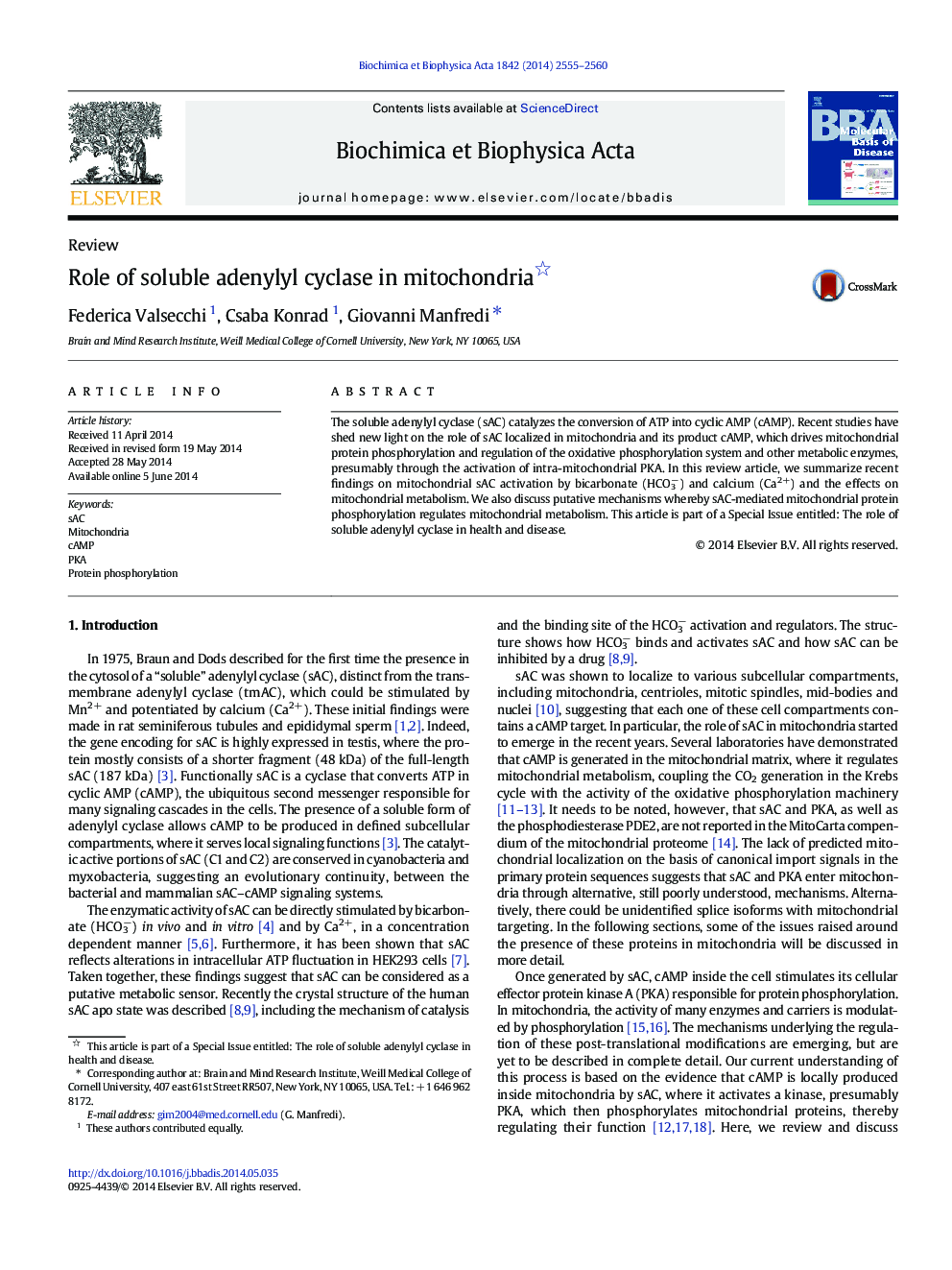| Article ID | Journal | Published Year | Pages | File Type |
|---|---|---|---|---|
| 1904632 | Biochimica et Biophysica Acta (BBA) - Molecular Basis of Disease | 2014 | 6 Pages |
•Soluble adenylyl cyclase (sAC) produces cAMP in the mitochondria of mammalian cells.•Mitochondrial cAMP generated by sAC modulates the function of mitochondrial enzymes.•Bicarbonate and calcium in the mitochondrial matrix are major regulators of sAC and cAMP.•The cAMP effector kinases and their targets in mitochondria remain to be fully elucidated.•This review describes the established functions of sAC in mitochondria and the open questions.
The soluble adenylyl cyclase (sAC) catalyzes the conversion of ATP into cyclic AMP (cAMP). Recent studies have shed new light on the role of sAC localized in mitochondria and its product cAMP, which drives mitochondrial protein phosphorylation and regulation of the oxidative phosphorylation system and other metabolic enzymes, presumably through the activation of intra-mitochondrial PKA. In this review article, we summarize recent findings on mitochondrial sAC activation by bicarbonate (HCO3−) and calcium (Ca2+) and the effects on mitochondrial metabolism. We also discuss putative mechanisms whereby sAC-mediated mitochondrial protein phosphorylation regulates mitochondrial metabolism. This article is part of a Special Issue entitled: The role of soluble adenylyl cyclase in health and disease.
